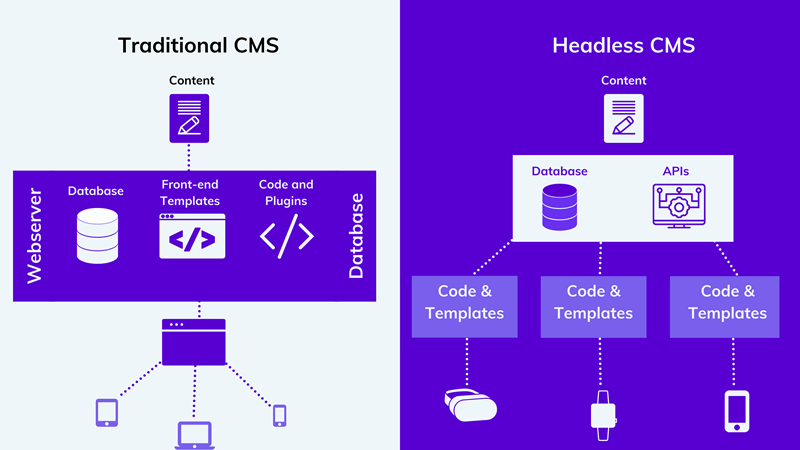A Headless CMS, or Headless Content Management System, is a type of CMS that separates the backend content management system (CMS) from the frontend presentation layer. Unlike traditional CMSs, Headless CMSs don't have a built-in frontend and instead provide an API to deliver content to various platforms. This decoupled architecture offers greater flexibility, scalability, and control over content distribution.
Introduction
A Headless CMS, or Headless Content Management System, is a type of CMS that separates the backend content management system (CMS) from the frontend presentation layer. Unlike traditional CMSs, Headless CMSs don't have a built-in frontend and instead provide an API to deliver content to various platforms. This decoupled architecture offers greater flexibility, scalability, and control over content distribution.
Key Components of a Headless CMS
- Content Management System (CMS):
- A user-friendly interface to create, edit, and manage content.
- Stores content in a structured format (e.g., JSON, XML).
- Content Delivery Network (CDN):
- Distributes content across multiple servers to improve performance and reliability.
- API:
- Exposes content to various platforms and devices through a RESTful or GraphQL API.
Benefits of Using a Headless CMS
- Flexibility: Content can be delivered to any device or platform (web, mobile, IoT devices).
- Scalability: Easily scale your content delivery to meet increasing demand.
- Customizability: Design unique and personalized user experiences.
- Developer-Friendly: Developers can use their preferred tools and frameworks to build frontend applications.
- Content Consistency: Ensure consistent content delivery across all channels.
- Faster Time to Market: Rapidly deploy new features and content updates.
How to Use a Headless CMS
- Content Creation:
- Use the CMS's user-friendly interface to create and edit content.
- Organize content into structured formats (e.g., articles, blog posts, product pages).
- API Integration:
- Use the CMS's API to retrieve and deliver content to your frontend applications.
- Integrate the API with your frontend framework (e.g., React, Angular, Vue.js) to fetch and display content.
- Frontend Development:
- Design and develop the frontend interface using your preferred tools and technologies.
- Use the CMS's API to fetch and display content dynamically.
- Customize the user experience based on different devices and platforms.
- Content Delivery:
- Configure the CDN to optimize content delivery and reduce load times.
- Implement caching strategies to improve performance.
Popular Headless CMS Options
- Contentful: A powerful and flexible headless CMS.
- Strapi: An open-source, customizable headless CMS.
- WordPress VIP: A premium version of WordPress for enterprise-level use.
- Directus: An open-source data platform that can be used as a headless CMS.
- Netlify CMS: A simple, Git-based CMS for static websites.
Conclusion
Headless CMS offers a flexible and efficient way to manage and deliver content across multiple channels. By understanding the core concepts and following best practices, you can leverage the power of headless CMS to create engaging and dynamic digital experiences.
References:
- Contentful: https://www.contentful.com/
- Strapi: https://strapi.io/
- WordPress VIP: https://wpvip.com/
- Directus: https://directus.io/
- Netlify CMS: https://www.netlify.com/blog/tags/cms/
By carefully selecting a headless CMS and following best practices, you can create exceptional digital experiences that drive user engagement and business growth. Contct Keencomputer,com for details.
